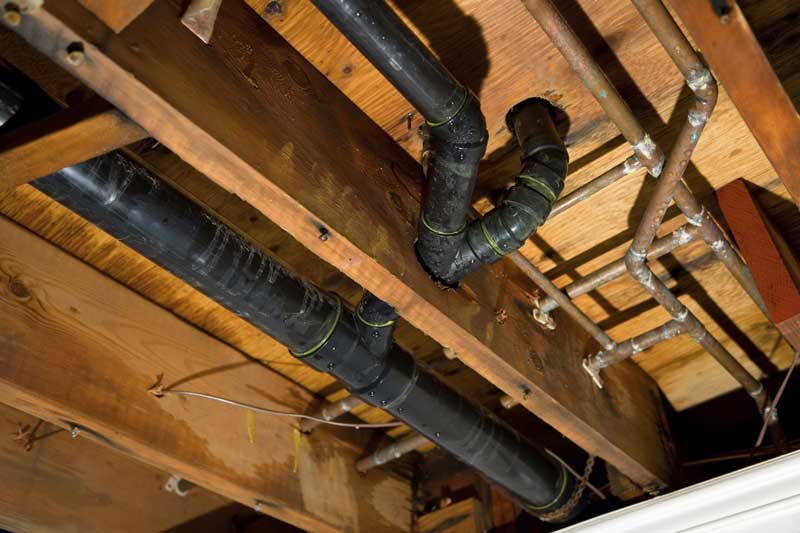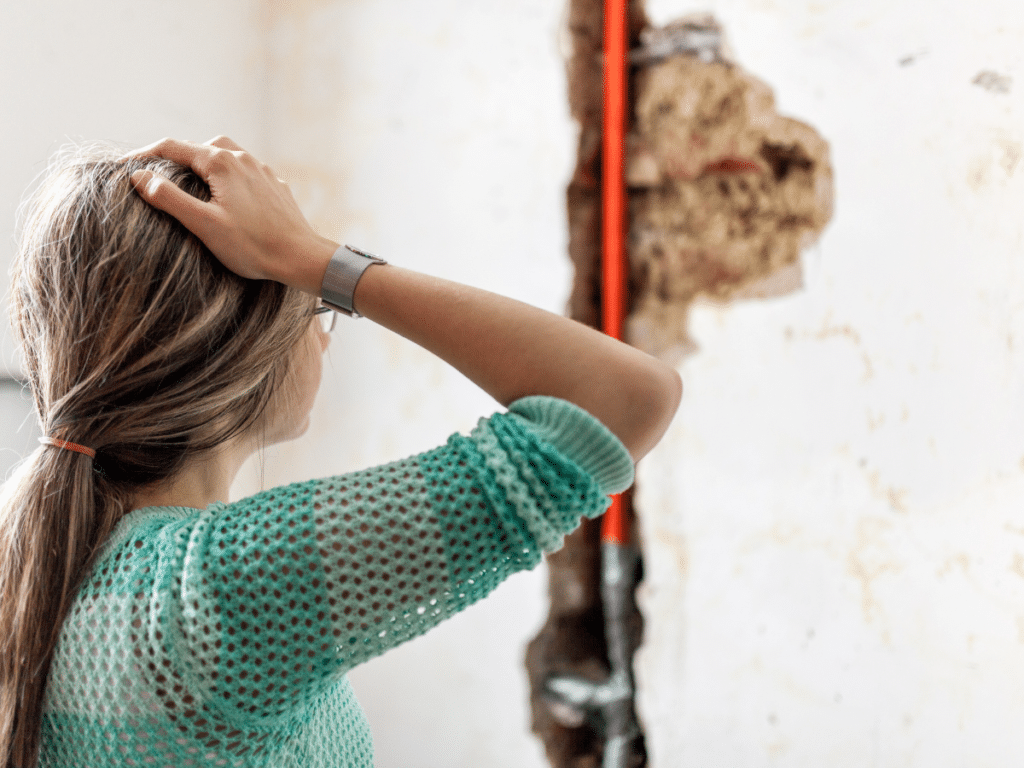Practical Advice for Handling Plumbing Issues in Older Homes
Practical Advice for Handling Plumbing Issues in Older Homes
Blog Article
They are making several great pointers regarding Common Plumbing Problems in Older Homes as a whole in this great article on the next paragraphs.

Older homes typically include charm, personality, and history, yet they can likewise bring a host of plumbing problems. Whether you're taking care of aging pipelines, low water pressure, or leakages, recognizing exactly how to deal with these usual problems is vital to maintaining a risk-free and functional home. In this guide, we'll discover the common pipes challenges dealt with by older homes and provide functional remedies to keep your pipes in leading shape.
Recognizing Typical Pipes Issues
Aging Pipelines
Among one of the most common concerns in older homes is aging pipes. Relying on the period in which your home was constructed, the pipes could be made from products that have degraded with time, such as galvanized steel, cast iron, and even lead. These materials can rust, come to be fragile, or establish leakages, resulting in water damages and possible health hazards.
Water Top Quality Testing
Older pipes can impact the top quality of your water. Conduct a water quality test to look for contaminants such as lead, rust, or various other contaminations that may be introduced by maturing pipelines.
Solutions for Common Plumbing Problems
Changing Aging Pipelines
If your home has old, weakening pipes, think about changing them with modern-day products like copper or PEX. This can be a substantial financial investment, but it will prevent future issues and enhance the safety and security and integrity of your pipes system.
Dealing With Low Tide Stress
To deal with low tide pressure, start by cleaning or changing old components and getting rid of mineral build-up in the pipelines. If the problem persists, it might be essential to change areas of rusty pipelines.
Repairing and Changing Dripping Pipes
For small leaks, you can use pipe clamps or epoxy putty as a temporary solution. However, it's best to change dripping pipelines completely to avoid further damage.
Upgrading Components
Updating old components to contemporary, water-efficient models can improve your home's pipes efficiency and lower water usage. Try to find fixtures with the WaterSense label for the very best effectiveness.
Taking Care Of Pipe Corrosion
If your pipelines are worn away, changing them with corrosion-resistant products like copper, PVC, or PEX is the most effective remedy. Normal inspections and water quality upkeep can aid protect against further rust.
Low Tide Pressure
If you're experiencing low water stress, it could be because of natural resources, corrosion inside the pipelines, or old components that are no more functioning successfully. This can be a significant aggravation, particularly in areas like showers and sinks.
Dripping Pipelines
Leaks are one more frequent issue in older homes, often caused by rusty or worn-out pipes. Also small leakages can cause significant water damage, mold and mildew growth, and raised water expenses if not resolved immediately.
Out-of-date Components
Out-of-date plumbing components such as faucets, commodes, and showerheads not only look old yet might also be much less efficient, susceptible to leaks, or inappropriate with contemporary plumbing standards.
Pipeline Rust
Deterioration is a common trouble in older pipes, specifically those made from galvanized steel or cast iron. Corroded pipelines can restrict water flow, create discoloration, and at some point result in leakages or pipeline bursts.
Examining the Condition of Your Plumbing
Checking Visible Pipes
Beginning by inspecting any type of noticeable pipes in your home, such as those in cellars, crawl spaces, or under sinks. Search for indications of deterioration, leaks, or rust, which can suggest underlying concerns.
Checking for Leaks
Look for leakages by inspecting areas around taps, commodes, and under sinks. You can also monitor your water meter before and after a duration of no water use to discover surprise leakages.
When to Call a Professional
While some plumbing problems can be managed with DIY solutions, there are times when it's finest to call a professional. If you're handling significant leakages, comprehensive rust, or are unclear about the problem of your pipelines, a licensed plumbing can provide professional evaluation and repair service.
Preventive Upkeep Tips
Normal Inspections
Frequently check your plumbing system for signs of deterioration. Capturing concerns early can prevent costly repair work down the line.
Water Stress Law
Guarantee your water stress is within the advised array to stay clear of emphasizing your pipelines and fixtures. A plumbing can set up a pressure regulator if needed.
Water Quality Upkeep
Mount water filters or softeners if your water quality is poor. This can protect your pipelines and components from damages triggered by difficult water or pollutants.
Positive Pipe Replacement
If your home has very old pipelines, take into consideration positive replacement before major issues arise. This can conserve you from emergency situation repair work and water damage.
Conclusion
Handling plumbing concerns in older homes needs a combination of vigilance, preventative upkeep, and timely upgrades. By comprehending the common challenges and recognizing when to look for professional aid, you can guarantee your plumbing system remains functional and trusted for several years to find.
Common Plumbing Issues in Older Homes and How to Fix Them
Owning an older home in Australia comes with its unique charm and a set of challenges, especially when it comes to plumbing. The Sunshine Coast has many older properties that can harbour plumbing problems that aren t just inconvenient but potentially costly. Here s a look at some common plumbing issues in older homes and expert advice on how to handle them.
Outdated Piping Materials
Many older homes were built with galvanised steel, cast iron, or even lead pipes, materials that are far from ideal by today s standards. Galvanised pipes are prone to corrosion and clogging, while lead pipes pose serious health risks.
How to Fix:
Replacing old pipes is a job for a professional. Upgrading to copper or PVC piping not only enhances water quality and flow but also increases the property s safety and value. If you suspect your home has outdated materials, a licensed plumber can conduct a thorough inspection and recommend the best course of action.
Corrosion and Pipe Degradation
Over time, exposure to water and minerals can cause pipes to corrode, leading to leaks, bursts, and water contamination. Corrosion is especially common in homes over 50 years old.
How to Fix:
Regular inspections can catch early signs of corrosion. If corrosion is found, the affected section of piping often needs to be replaced. For homes with extensive corrosion, a complete plumbing overhaul might be necessary. It s crucial to consult with a plumbing expert to understand the extent of the issue.
Tree Root Intrusion
Older neighbourhoods usually have mature trees whose roots can intrude into pipe lines, causing blockages or damage. This is particularly problematic for sewer lines, where roots seek out water sources.
How to Fix:
A plumber can use a specialised camera to inspect sewer lines for root intrusion. If roots are a problem, methods like root cutting or hydro-jetting can clear the obstruction. In severe cases, part of the pipe may need replacing. Consider root barriers around the piping to prevent future issues.
Inadequate Water Pressure
Low water pressure in older homes can be due to various factors, including corroded water lines, sediment build-up in pipes, or outdated fixtures.
How to Fix:
First, check if the low pressure is isolated to one area or throughout the house. Replacing old fixtures can sometimes resolve the issue. However, if the problem is more widespread, it might be due to sediment or corrosion. Flushing the system or replacing the affected pipes usually restores normal pressure. Again, a professional assessment is advisable.
Outdated Fixtures
Older homes often feature fixtures that are not only visually dated but functionally inefficient. This includes everything from toilets and taps to showerheads and washing machine hoses.
How to Fix:
Updating these fixtures can improve both water efficiency and the aesthetic appeal of your home. Modern fixtures are designed to conserve water, which can significantly reduce your water bill and lessen your environmental impact.
Conclusion
Maintaining the plumbing in an older home requires a proactive approach. Regular checks and updates are key to preserving these beautiful properties. If you re facing plumbing issues in your older home, it s best to call on experienced professionals like Green & Gold Plumbing & Gas. With the right expertise, even the most daunting plumbing problems can be resolved, ensuring that your home s character is maintained while its functionality is enhanced.
https://gandgplumbing.com.au/common-plumbing-issues-in-older-homes-and-how-to-fix-them/

Hopefully you enjoyed our part about Common Plumbing Challenges In Old Buildings. Thanks so much for taking a few minutes to read our blog. Sharing is good. You just don't know, you will be doing someone a favor. Kudos for your time. Please stop by our website back soon.
Click Here Report this page